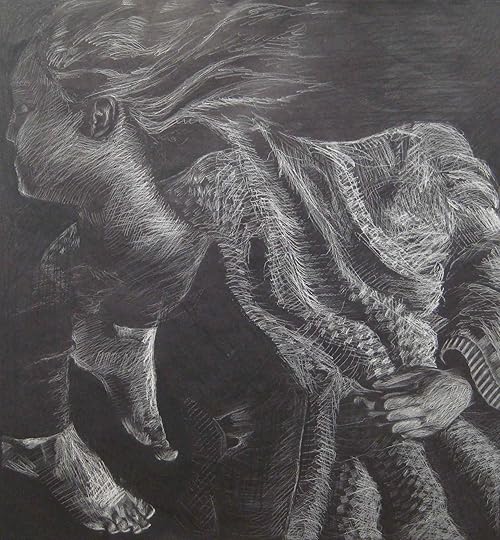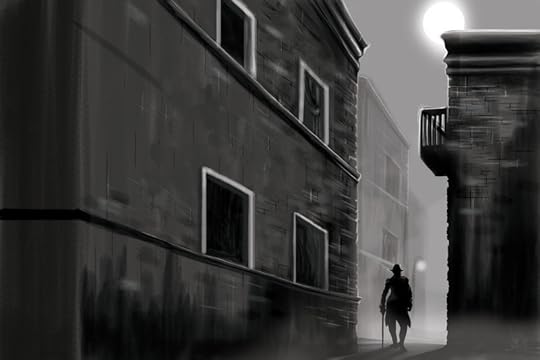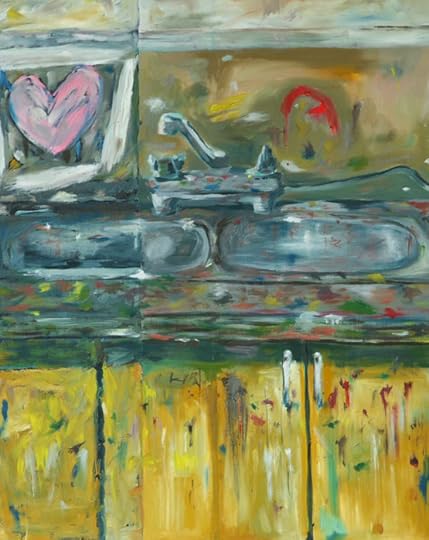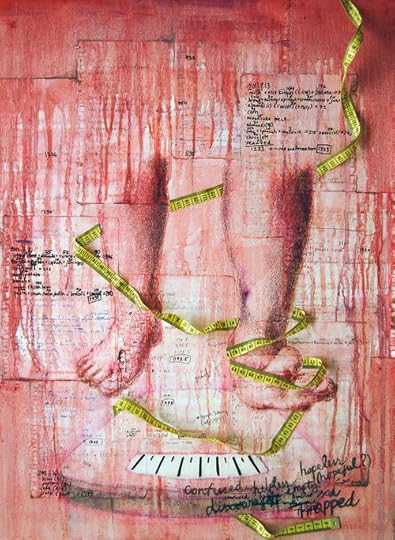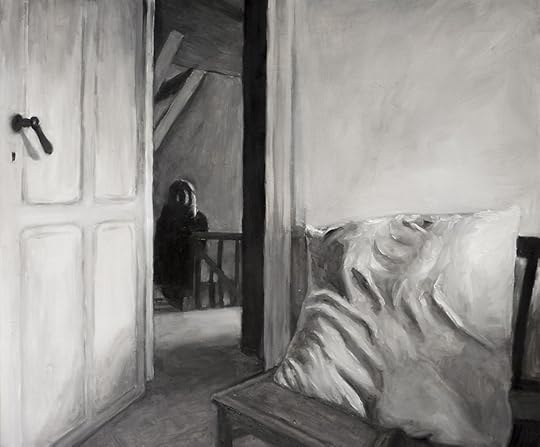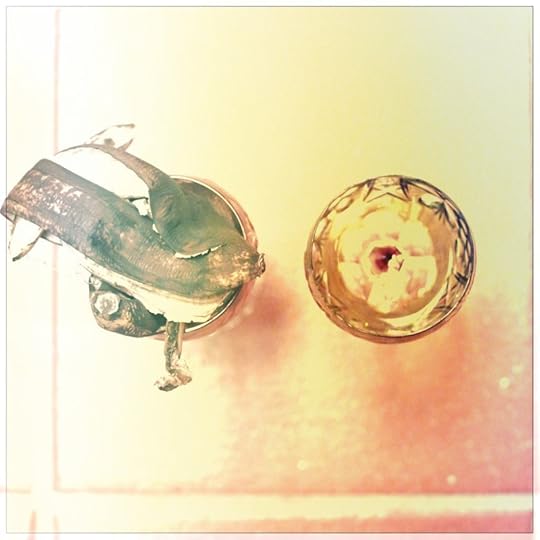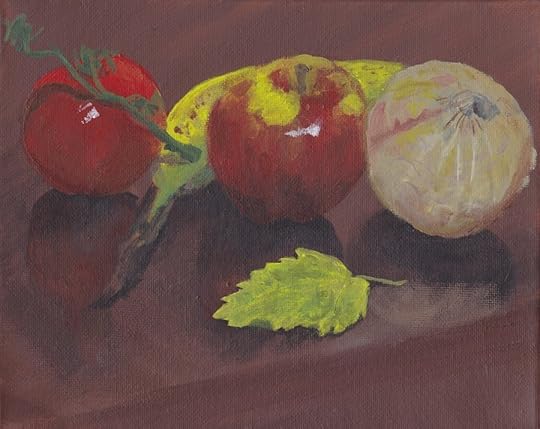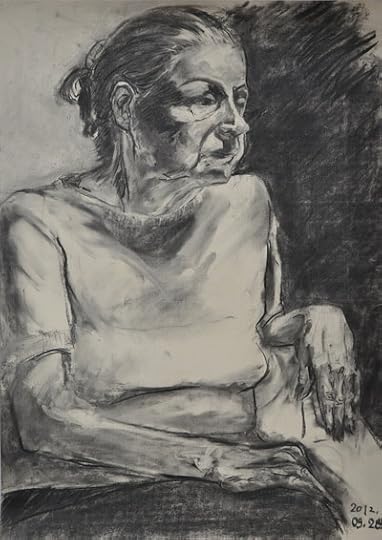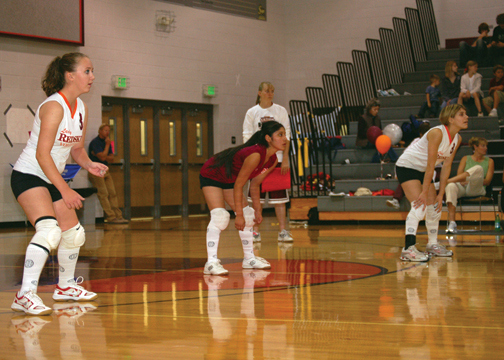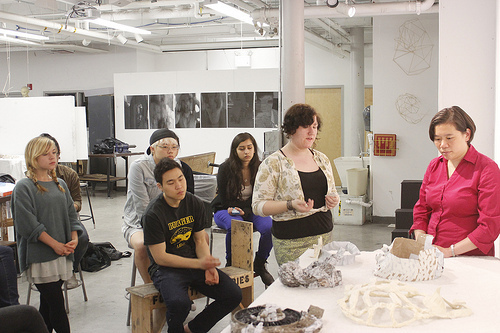Clara Lieu's Blog, page 50
July 18, 2013
Book Proof!
My hard copy proof of my book arrived! Nothing can describe what it feels like to open the package and hold your book in your very own hands. I’ve been eagerly anticipating this moment all week, it’s a relief to see that everything worked out fine. Now the next step is to officially approve my book proof and get the book up on Amazon and Kindle!


Ask the Art Professor: Is hard work and experimenting continuously such a bad thing?
Welcome to “Ask the Art Professor“! Essentially an advice column for visual artists, this is your chance to ask me your questions about being an artist, the creative process, career advice, a technical question about a material, etc. Anything from the smallest technical question to the large and philosophical is welcome. I’ll do my best to provide a thorough, comprehensive answer to your question. Submit your question by emailing me at clara(at)claralieu.com, or by posting here on this blog. All questions will be posted anonymously. Read an archive of past articles here.
Here’s today’s question:
“I “overwork” each and every painting I do. I call it done, then work another 20 hours on say, a few edges or some blended area. I think I know when it’ll be right, and certainly know it’s not right “enough”, so I continue, mostly dabbling until it falls or not into place. I struggle very, very, hard with my work, but I’m not satisfied by far with almost all of my work. Can you give me advice on this? I’ve heard ‘don’t fiddle’, but is hard work, experimenting continuously such a bad thing?”
I believe that experimentation and hard work are both key essentials to being an artist; you won’t go anywhere artistically without rigorously using both in your work process. However, both experimentation and hard work need to be intelligently applied in order for your paintings to positively benefit.
From what you’re describing, it sounds like you’re employing hard work and experimentation very late in the process of making a painting. For many reasons, this approach to painting can sometimes be more detrimental than helpful. Experimentation is critical to the creative process, but it tends to be at the height of its effectiveness in the early stages of a work, when one is brainstorming and trying out all different kinds of ideas. It is frequently counterproductive to be experimenting and making major last minute changes in the final stages when most of the painting is already finished.
One major issue that all artists have to contend with is when to stop working on a piece and to call it “finished”. The problem with the process of painting (as well as many other visual art media) is that you can always do more. There’s no concrete signal in the process of painting that something is officially “done”. We have to make that decision for ourselves, and that decision is frequently incredibly nerve wracking for many of us.
I know that I myself always struggle with this because I personally want my work to appear spontaneous and gestural. There is such a fine line between a drawing looking fresh and refined versus looking simply incomplete. I stop working on a piece when I notice that I’m nit picking the work, when I’m not making any major changes anymore and I’m just sitting there needlessly scrutinizing tiny details. When too much time is spent fussing about minute areas of a painting, the painting loses it’s original character and begins to look tired and labored. Hard work is important, but not if it’s misdirected and making things worse in the painting.
John Singer Sargent
One of the best examples of a painter who really knew when to stop working on a painting is John Singer Sargent. He was so good at selecting which areas to fully render and which areas could be left looking more “unfinished”. This gave his paintings a freshness that was incredibly active and lively, as if the paint was still wet. In this painting above, there is a comparative tightness and refined quality to the face, while the rest of the piece is painted very loosely. Had Sargent fully rendered every part of the painting to the degree that the face was rendered, this painting would have been overworked.
One of the classic problems I see with beginning students is works that simply look unfinished. So when I work with freshman students at RISD in my drawing class, I ask them to go too far, to intentionally overwork a piece to the point that it “dies” in the process. The reason I encourage this kind of approach with my freshman students is because it’s important to have the experience of having pushed a piece too far in order to figure out where to stop. Then with their next work, they’re able to pull back a little to bring the work to the stage they want it to be at. This is a good exercise which provides students the skills to be able to gauge when to stop in a piece. You won’t know how far to go unless you’ve gone too far.
Related articles:
“How do you achieve a luminous effect in a painting through color and value?”
“Does painting what you see limit your artistic possibilities?”
“What is the practical meaning of color theory?”
“How do you compose a striking painting with color?”


July 17, 2013
Crit Wall #14
Welcome to “Crit Wall“, where I offer online critiques of individual art pieces. To submit, send me a link to one image by commenting here, or by emailing the link to me at clara(at)claralieu.com. Please, NO ATTACHMENTS. Include the media, size, and title if you have one. Only submit original, finished works, no works in progress or sketches. Artwork created for a RISD degree program course is not eligible. You’ll receive notification if your piece is selected to be critiqued. Only one submission per person please, and know that I will not be able to critique every single work due to the volume of submissions. All images will be posted anonymously.
“Induction Orbit”
13″ x 19″
digital media
Overall, this is a very commanding, high impact piece. Right away this work grabs your attention and is able to sustain it over a period of time, it’s the kind of work that you want to ponder and observe for a while.
In terms of the content, this work is suggestive and enigmatic. There are passages that seem to hint at forms that could be recognizable, but the piece never gets specific enough that the subject matter is revealed. This creates a sense of ambiguity and mystery that is hugely compelling. The textures and feeling of transparency throughout the entire piece are lovely, and seem to originate from surfaces that could be found in nature.
One aspect of this work that I find particularly successful is that this piece has a very fluid, painterly quality to it. Everything flows from one section to the next in this work, and the transitions are handled with a wonderful sensitivity.
The colors in this piece are terrific, and handled with both boldness and subtlety. There is an excellent balance of saturated colors and muted colors. The muted colors support the saturated colors very effectively. The saturated colors are brilliant and vibrant, while the muted colors are quiet and reserved. The richness of the intense orange area on the left hand side contrasted against the bright, frosty blue is particularly satisfying of a relationship. On top of that, there is a great sense of light and dark contrast in this work that is extremely effective. The brightest whites have a luminous quality to them and work well against the darker passages which have a tremendous amount of depth.
What is impressive about this work is that it works well both from a distance and up close. From far away, the work has strong enough contrast and bold enough colors and shapes to attract attention immediately. Upon further scrutiny, there are many minute, beautiful details to be observed.
The part of this work that could be improved would be in the composition. The line going down the center of the composition essentially divides the piece in half, which is too symmetrical and predictable. Also, the placement of the two spheres on either side is too obvious. This dividing line and the two spheres need to be placed off center so that they don’t appear to be too neat and formal.
Past “Crit Wall” pieces are below. Click on the images to read the critique.


July 16, 2013
Ask the Art Professor: What is the most important mindset a student needs to have in order to create a successful drawing?
Welcome to “Ask the Art Professor“! Essentially an advice column for visual artists, this is your chance to ask me your questions about being an artist, the creative process, career advice, a technical question about a material, etc. Anything from the smallest technical question to the large and philosophical is welcome. I’ll do my best to provide a thorough, comprehensive answer to your question. Submit your question by emailing me at clara(at)claralieu.com, or by posting here on this blog. All questions will be posted anonymously. Read an archive of past articles here.
Here’s today’s question:
“What is the most important mindset a student needs to have in order to create a successful drawing?”
Mindset is everything when it comes to drawing. People tend to think that drawing is only about what your hands and arms are physically engaged in. While the physical aspect of drawing certainly is important, how you approach your drawing mentally is much more critical. I’ve seen students in my freshman drawing classes at RISD make incredible leaps and improvements in their drawings in a matter of 15 minutes. This isn’t because their hands magically gained the ability to physically draw something over the course of those 15 minutes, rather it’s because they made some kind of shift or change in their mindset that allowed them to make a major stride in their work.
“Ready position” in volleyball
When I was in high school, I was a hardcore volleyball player. I did it all: the varsity team at school, Jr. Olympics, tournaments, even volleyball camp. I remember clearly something my coach described as being “ready position”. “Ready position” is the position you’re in when you’re waiting for the other team’s serve to come across the net. You simply have to be ready for anything to happen, really alert, focused, and yet flexible enough that your body could move in any direction at any given moment. Physically speaking, when you’re in “ready position”, you’re a little hunched over, your arms are out to the side, you’re on the balls of your feet, loose, and slightly moving. What happens in drawing is very similar to the ball coming across the net; you never know what’s going to happen, and yet you have to deal with it as it’s happening. Drawing is a series of reactions, to the marks that you’ve already made and the marks that you anticipate. The process is unpredictable and wild, which is exactly what makes drawing so amazing and infuriating at the same time.
It sounds very cheesy, but when I sit down to work on a drawing I have to pump myself up mentally to get going. Regardless of how I actually feel in real life, I tell myself in my head that I KICK ASS and that I am capable of anything I want. I have to build up a very strong foundation of confidence and belief in myself and that I’m doing. If I don’t, self-doubt will completely take over and prevent me from working altogether. Any shred of doubt always manifests itself into a huge distraction that makes it impossible for me to function. For me, the time for questioning is after I’m out of the trenches of working. When I’m drawing, I don’t judge myself or the work. I reserve that part of the process for after I’m done working for the day.
This is why the moment before my hand physically touches the blank paper is so scary. In those moments, I’m mentally preparing myself to get started. I’m always nervous just before I get started drawing. I think it’s very similar to jumping into a pool. Just yesterday I was at the pool, feeling a slight tinge of fear before I jumped in. Will the water be cold? Will I be freezing the whole time that I’m in the pool? Yes, all silly concerns, but that’s what goes through my head. Jumping into a pool is a major commitment, you either do it or you don’t. When I take the plunge, I’m drenched in water, and there’s no going back to being dry. The process of drawing is very similar, once your hand starts moving across the surface of the page, there is simply no going back to that blank page. You have to be ready to make bold commitments when you draw, being fussy and flaky about your marks only results in timid, boring results. Those commitments can only happen if you back them up with confidence and a strong mindset.
Related articles:
“What is a gesture drawing?”
“Is drawing considered an innate talent or a craft, which can be learned by anyone?”
“How can I learn to shade objects in my drawings?”
“How can I draw what I see in my head?”
“What is the best way to practice my drawing skills?”
“How can you learn to draw hair?”
“How do you get yourself to practice drawing?”
“What is the best way to simplify the human figure?”
“How can I learn to draw noses?”


July 15, 2013
Crit Wall #13
Welcome to “Crit Wall“, where I offer online critiques of individual art pieces. To submit, send me a link to one image by commenting here, or by emailing the link to me at clara(at)claralieu.com. Please, NO ATTACHMENTS. Include the media, size, and title if you have one. Only submit original, finished works, no works in progress or sketches. Artwork created for a RISD degree program course is not eligible. You’ll receive notification if your piece is selected to be critiqued. Only one submission per person please, and know that I will not be able to critique every single work due to the volume of submissions. All images will be posted anonymously.
“Passport”
acrylic on canvas
48″ x 48″
The most effective part of this piece is where the vertical letters on the left hand side seem to blend into the city and the people in the lower left hand corner. In this area, the imagery and the text merge nicely and establish a visual relationship with each other. The people in the lower left hand corner are painted with simple shapes which is effective considering that there are so many of them in a relatively small area of the painting. The city needs work, many of the shapes seem wobbly and lack structure and depth. More detail would be needed in the city along with more specifics in the architectural elements to make this area stronger. It would help the piece if the architecture could point to a specific city, which would aid the narrative behind the work. The specific is always more interesting than the general.
The composition is the weakest aspect of this piece. Overall, the composition feels fragmented and scattered, with some areas given tremendous detail and emphasis while other areas are left feeling empty and neglected. This causes the piece to seem inconsistent and unbalanced in terms of the treatment of each area. Specifically, the lower left hand corner feels far too separate and distant from the imagery in the upper right hand corner. The vertical line that is going right down the middle of the page divides the piece perfectly in half, which feels static and predictable. In general, compositions tend to be more dynamic when diagonals are used; horizontal and vertical lines tend to look boring and flat. There is also a lot of wasted space in this piece, more than half of the image is the plain, flat brown color and is devoid of any imagery, leaving the viewer yearning for more visual stimulation.
In terms of content, clearly the piece is about traveling. The large group of people in the lower left hand corner with all of their luggage suggests people immigrating to another country. The image in the upper right hand corner is obviously an image from someone’s passport. However, these two images fail to relate to each other visually speaking, and it’s almost as if the piece is divided up into two separate paintings. Conceptually, this piece is too straightforward, and doesn’t leave much up to interpretation. The work doesn’t pique the viewer’s curiosity about what the images are about because the subject matter is so obvious. To have more conceptual depth, the piece needs to be have a hint of mystery to it that provokes thought in the viewer. To achieve this, the image in the upper right hand corner could be removed, directing all of the emphasis to the lower left hand corner with the people. A significant portion of this piece could be cropped out, causing the work to be more focused on its strengths.
Past “Crit Wall” pieces are below. Click on the images to read the critique.


July 14, 2013
Ask the Art Professor: How did you become an art professor?
Welcome to “Ask the Art Professor“! Essentially an advice column for visual artists, this is your chance to ask me your questions about being an artist, the creative process, career advice, a technical question about a material, etc. Anything from the smallest technical question to the large and philosophical is welcome. I’ll do my best to provide a thorough, comprehensive answer to your question. Submit your question by emailing me at clara(at)claralieu.com, or by posting here on this blog. All questions will be posted anonymously. Read an archive of past articles here.
Here’s today’s question:
“How did you become an art professor? Was the process hard? Would you say, that nowadays, approaching a career towards art is not realistic goal if you want to make a living in such “economy?”
Technically, to become an art professor, you need to have completed an MFA degree. Once you have the degree, this allows you to apply for college teaching positions. Although some graduate students get teaching experience by teaching undergraduates while they are completing their degree, many graduate students (like myself) started applying for college teaching positions with no prior college teaching experience.
In this sense, I do think that becoming an art professor can be difficult, in that you are totally left to your own devices. Teaching isn’t something you can learn quickly; it takes years of hard work, mistakes, and troubleshooting. You have to learn almost everything on your own, on the fly, with no one there to walk you through every step of the process. I think I was more prepared than the average graduate student to teach because I had spent 4 years as an art teacher at an elementary school before I went on to graduate school. Naturally, teaching at the elementary school level is incredibly different than teaching college. However, I did learn fundamental communication and organizational skills during those 4 years that proved to be invaluable to me later on when I started to teach college.
I couldn’t have had a better transition into college teaching: my first teaching position after graduate school was a one year sabbatical replacement for a painting/drawing position at a college preparatory school, Concord Academy in Concord, MA. College preparatory schools operate very much like miniature liberal arts colleges, and so it actually was a very similar experience to teaching at the college level. There were of course some big differences: each class I taught was 75 minutes long and met four times a week. By contrast, a college level course would run once a week for six hours. Fundamentally speaking, I felt like I was teaching at the college level due to the high caliber of faculty and students at the school.
At this teaching position, I learned tremendously about all aspects of teaching art. The best part of this experience was working with a fantastic group of colleagues in the art department, many of whom I still keep in touch with regularly. The camaraderie in the art department was wonderful, with a vibrant energy that all of the teachers contributed to. I remember within the first few weeks of classes having a student who was particularly strong in painting, but who I was finding challenging to deal with. I was at a total loss what to do, so I talked to the drawing teacher who sat down with me and gave me great suggestions for how to approach the situation. I read other teachers’ syllabi and course handouts. I exchanged ideas for assignments and looked at student work from other classes. I felt like a massive sponge all year, soaking up everything that anyone would teach me about teaching.
The following year, I transitioned into teaching at the college level. I landed a part-time position teaching in the Drawing area at the School of the Museum of Fine Arts, as well as another part-time position teaching in the fine arts department at the Art Institute of Boston at Lesley University. My experience at Concord Academy armed me with the necessary tools of teaching that I needed to get going at the college level.
I think teaching is a realistic goal if you are prepared to be in it for the long haul; it’s certainly not a profession that one can do casually. Teaching art at the college level has always been hugely competitive, regardless of how the economy is doing. Read these articles below for more details on this:
Related articles:
“How do I become an undergraduate art professor?“
“What should I be working on now if I would like to be an art professor?”
“What makes a student artist stand out from their peers?”


July 13, 2013
Off to press
I’ve spent the past few days working closely with my editor to finish up the last stage of editorial work on my book. Like the layout, there are so many tiny factors that go into this process. Issues like capitalization, punctuation, etc. were all prominent in the process. I’m so glad that I have such a wonderful editor, she’s on top of every little detail and has pointed out so many things that I would never have even thought of. Another thing I got to do while proofreading was read the book cover to cover several times. This gave me a sense of how the book flowed overall, which I had never experienced before. I figured out in this process that the book only takes one hour to read, which is great. That was my original intention, that it’s a book that you can read in one sitting, but that one will reference regularly.
Now I’m concerned with what to do with myself while I wait for my physical proof copy. Nothing makes me more anxious than waiting and feeling like I have nothing to work on. I don’t want to start any of my artwork as I’ve decided that I need the summer to focus exclusively on this book. I’ve been reading a lot of author websites, and one site recommended starting your next book while you wait. Apparently, authors have to do a lot of waiting, whether it’s to hear back from a publisher/literary agent or like I am, waiting for my book to be shipped.
I’ve decided that I don’t want to be a one trick pony, rather I would love to continue writing and publishing books for the rest of my life. So I’ve decided that my next book is going to be a compilation of all of my “Ask the Art Professor” columns. The book will be based on the blog posts, but be significantly more in depth with many visual examples of both my work and student work, mini-tutorials, and personal stories from my experience as an artist.


July 12, 2013
Crit Wall #12
Welcome to “Crit Wall“, where I offer online critiques of individual art pieces. To submit, send me a link to one image by commenting here, or by emailing the link to me at clara(at)claralieu.com. Please, NO ATTACHMENTS. Include the media, size, and title if you have one. Only submit original, finished works, no works in progress or sketches. Artwork created for a RISD degree program course is not eligible. You’ll receive notification if your piece is selected to be critiqued. Only one submission per person please, and know that I will not be able to critique every single work due to the volume of submissions. All images will be posted anonymously.
The painting of the bird is well executed, especially in the head. What makes this successful is that there is as consistent tightness to the brush strokes that is consistent throughout the entire bird. The details are beautifully rendered and have a delicate quality to them that is inviting. The bird needs to be integrated better with the collage elements. Currently, the bird seems too separate from the collage areas and doesn’t visually relate. One of the areas where the bird does start to integrate is where the branches go behind the “HOPE” letters. Perhaps if there were many more branches that extended out to the edges of the composition, the bird would have a greater presence and integrate better with the background. The addition of many more tiny, thin, delicate branches would provide a level of detail that would greatly enhance the piece.
In terms of the collage techniques used, this piece could be more fluid. In other words, it’s very obvious exactly where the papers have been torn. Instead, the ripped sheets could be torn less evenly and smoothly. The layering of the collage elements could be more playful and experimental, right now everything seems torn in a manner that is too neat and formal.
The “HOPE” letters on the left hand side draw too much attention to themselves. This is largely because they are high in contrast and because of the border around the letters. Text in a visual image is especially tricky and challenging. In general, text almost always takes attention away from the visuals; viewers can’t help but want to read the text first. The letters here would work better if they were slightly faded and more subtle.
The use of the Chinese text in the background comes across as arbitrary, and appears to be wallpaper that is simply filler for the background. There needs to be a stronger visual and/or conceptual relationship between the Chinese text and the rest of the image that is apparent to a broad audience. The piece of music in the background needs to be placed so that it is not dead center in the middle of the page. This choice seems too obvious and creates a composition that is not as dynamic as it could be.
Past “Crit Wall” pieces are below. Click on the images to read the critique.


July 11, 2013
Ask the Art Professor: How do you come up with ideas?
Here’s today’s question:
“How do you come up with ideas? Where should one look for inspiration?”
The answer to this question will be different for every single artist. Everyone finds inspiration in a completely different way, in contrasting places. Since I can’t provide an answer for every single person out there, I can give advice about how to alert yourself to seeing possible ideas. Essentially everything in the world has the potential to turn into an idea for art. What seems dull and boring to one person could be infinitely fascinating for another, and vice versa. If that’s the case then, where do you start? Start with yourself and your own personal experiences. Many artists think that they have to search extremely far and wide and come up with an immensely complicated subject for their work to be interesting. I’m frequently surprised that the best subject matter is simply what’s sitting there right in front of us, something that we commonly experience but don’t generally recognize as being special. Don’t take any experience in your life for granted. In my opinion, the most effective ideas are the ones that are personally driven, as they will have an authentic quality to them that cannot be achieved in any other way.

Some of the best projects in my RISD freshman drawing class are ones that come from personally driven ideas. I have an assignment I give every semester called “Six Levels of Pain”, in which students are asked to create a project that provides a new visual interpretation of the Wong-Baker pain chart. (see above) The range of projects is astounding: some are heartbreaking, others are beautiful, and some are even humorous.
This project below was by a student who lost her brother when he was 13 years old. To represent the six levels of pain, the student measured her childhood house and reconstructed the house to scale using bristol board. She used india ink to create stains to depict six places where her brother used to inhabit the house. With a solid concept and phenomenally immaculate, pristine execution, this student was able to create a piece that was incredibly moving and powerful.

This student below had kidney surgery. He used a format reminiscent of graphic novels to put together a narrative of images based on his experience with the surgery. The final charcoal drawing was haunting and mysterious, yet provided enough details for the viewer to understand what the drawing was fundamentally about.

One indispensable tool to employ when you are searching for ideas and inspiration is the sketchbook. The sketchbook is an essential commitment and the ultimate resource for every artist. You should be continually on a constant hunt for ideas. The evolution of your ideas and images should be documented daily in the sketchbook. Brimming with creative potential, these raw ideas, random thoughts, and unfiltered content are packed into the sketchbook. These contents should be saved for later use, and will frequently emerge and used directly in a future project. An effective sketchbook possesses an enormous range of resources and influences, provides a wealth of information, and is full of creative stimulants. The sketchbook should reflect the inner workings of your mind, as well as your strategies for approaching your work.
If you can maintain a sketchbook regularly, you should eventually end up with more ideas than you can handle at a time- a good problem to have as an artist!

A spread from one of my sketchbooks from my undergraduate years at RISD
Related articles:
“How much of your emotional life do you allow to infiltrate your work?”
“How do you face artistic burnout?”
“How can an artist balance their life?”
“How can an artist overcome their financial issues?”
“How can an artist create an artistic group outside of school?”
“Am I actually an artist?”
“What do you do for art storage?”
“How can one regain lost satisfaction with their work?”


July 10, 2013
Final Cover
My husband finished up the cover last night! There are so many minute decisions and factors that go into designing a cover, so we spent a long time experimenting with many possibilities. I’m very pleased with the outcome. I think this final cover has a dynamic quality to it that was lacking in the stock photo.
With the cover complete, this means I am days away from sending the book to print. There are a few loose ends to tie up with the layout, and I’m waiting to hear from my editor, who is doing the final proofreading.






